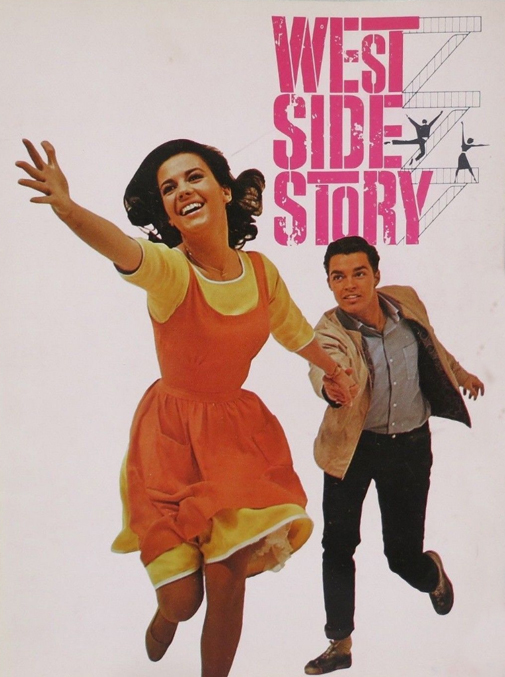 Occassionally Team Experience passes a movie around amongst the team for a retrospective. This month's installment is West Side Story (1961), one of the most popular films of all time and winner of 10 Oscars.
Occassionally Team Experience passes a movie around amongst the team for a retrospective. This month's installment is West Side Story (1961), one of the most popular films of all time and winner of 10 Oscars.
Part One - by Lynn Lee
Part Two -by Eric Blume
Part 3 by Nathaniel R
Growing up I watched West Side Story as often as I could. It was surely my most formative film though as a kid I didn't really know the hows and whys of movies, only how they made me feel. Some movies were good for laughing, others for crying, and a lot of them just to get caught up in adventures and stories. West Side Story was, no, IS, all the things a movie could be in one massive tuneful package. I devoured it every chance I got as a kid.
When Eric left us in Part Two Maria and Tony had just symbolically wed, lit by heavenly golden light, as they finished singing "One Hand, One Heart". A soft, reverent hush fell over the scene as the lovers kissed and the music faded. Then an abrupt cut to:
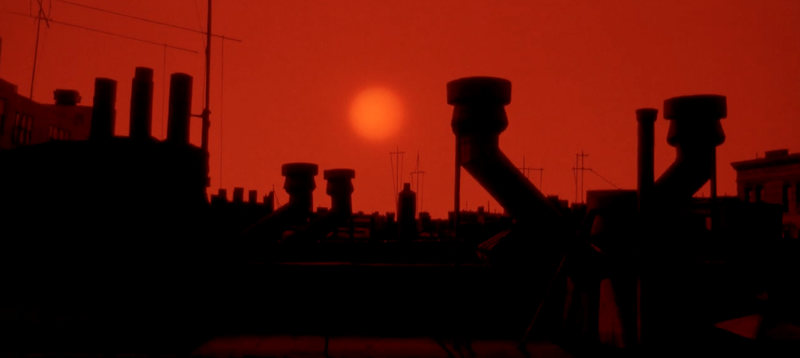
01:34:59 This impossibly bold red sky. It's a hard image with a blaring aggressive music cue signalling a major shift within the movie. From here on out: tragedy. The juxtaposition of the wedding with this image, remains to this day, one of the most violent cuts I've ever seen in a movie. Red is the only choice for it. The camera then swoops down to street level as the Jets begin to sing "Tonight"...
1:35:52 We've left the natural light of the movie's sophisticated and grounding wordless opening scene entirely behind. Now the actors are even singing direct to camera, breaking the fourth wall because they have to break something.
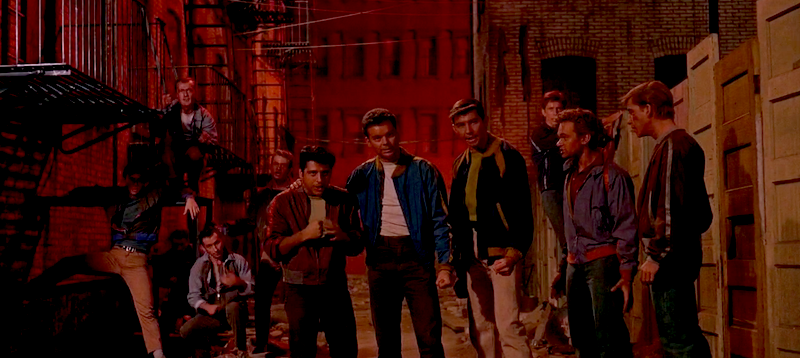
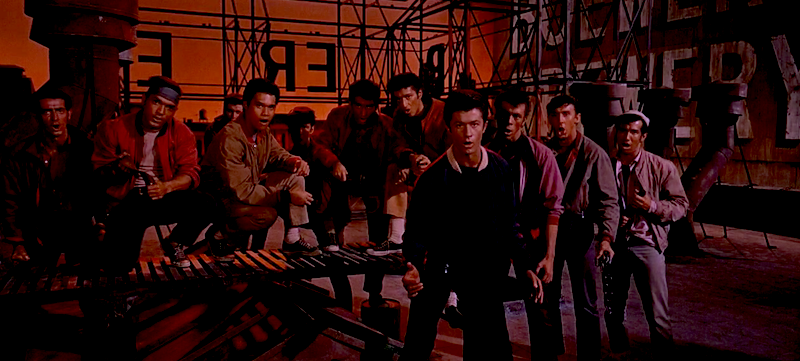
The Jets: WELL, THEY BEGAN IT
The Sharks: WELL, THEY BEGAN IT
ALL: And we're the ones to stop them once and for all. TONIGHT!
This epic reprise of "Tonight" distorts and reshapes something that once belonged only to Tony & Maria, adding thorns to the song in which their love first bloomed.

Anita's gonna get her kicks tonight.
We'll have a private little mix tonight.
1:36:00 But we still get hints of the violence-free song it used to be. Anita, Tony, and Maria are added in to this climactic musical set piece, so the song expands to juggle three disparate agendas (violence, sex, love). If West Side Story is the movie that is all movies in one, "Tonight (Reprise)" is the number that is all things to West Side Story.
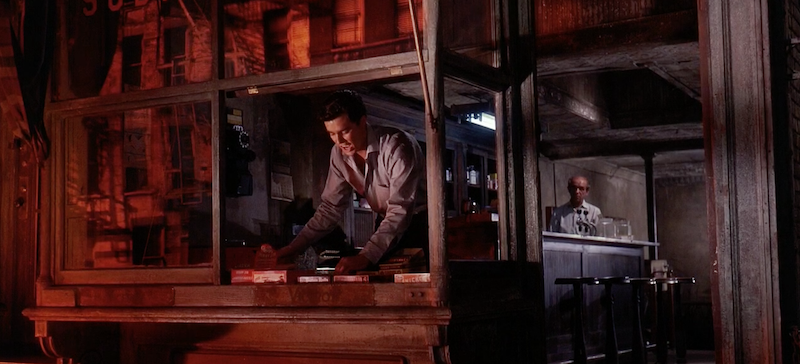
Tonight Tonight I'll see my love tonight. And Tonight stars will stop where they are
1:36:15 Please note that when Tony reenters, we get an image that fits his inbetween state. From the very beginning of the movie he's been both of the Jets and apart from them. Here the theatrical red light is paired with the real world light (still artificial, yeah yeah, I know how movie works) of Doc's store. That's both a character detail and a subtle cue of redirection, because then the light begins to shift back closer to reality in the other shots as well allowing more than just one color to dominate the scene, or allowing them to at least fight it out.
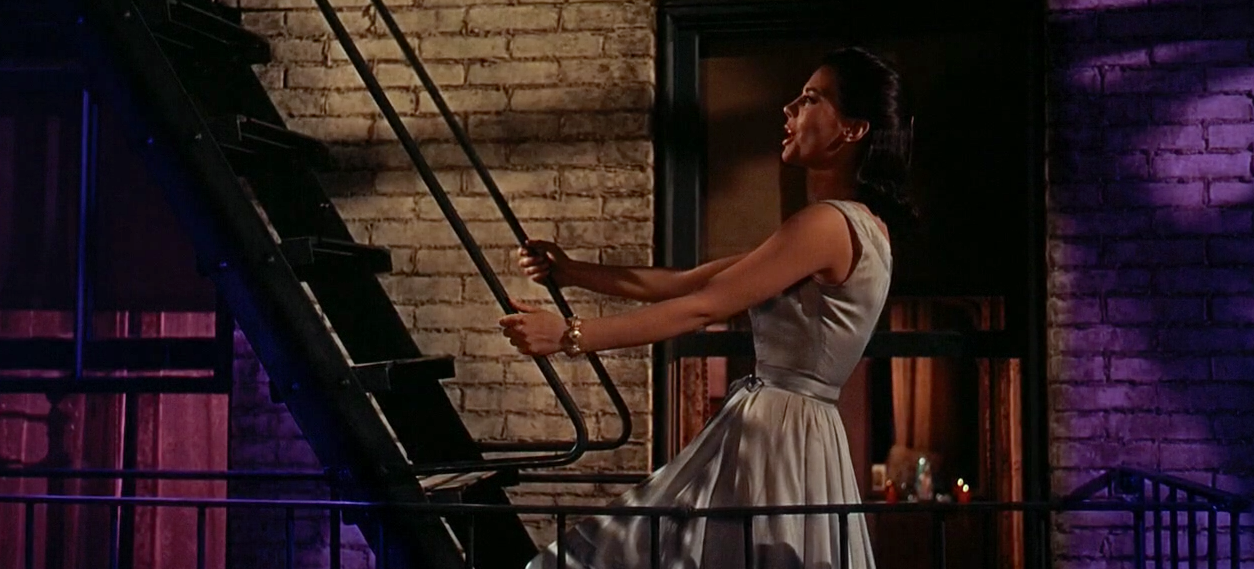
Tonight there will be no morning star
01:37:37 As in this image of Maria who, like Tony, is caught between worlds, notice the yellowis center (the Jets) surrounded by purple (the Sharks color) to the sides. The use of color in this movie is something else and contemporary cinema could learn so very much from it. Color is, I'd argue, the least regularly utiliized tool of filmmaking in contemporary cinema. When a modern movie embraces expressive color (say, La La Land or Moonlight) it feels more shocking than it should just from its total underuse in 95% of the movies out there.
Anyway, the song is brilliant. It's at once a psychological rationalization, an aspirational dream, a violent threat, a come hither promise, and am impending nightmare. All achieved through the complexity of Bernstein's music and brilliant cross-cutting (the editing by also won the Oscar) and amazing cinematography and production design.
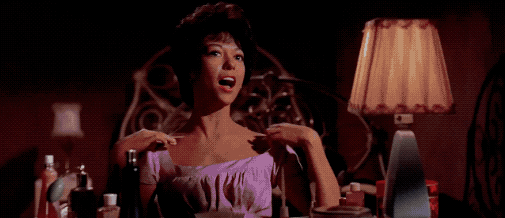
1:38:10 And catch this action via gif: At the end of the number when all the voices overlap with their own agendas/verses, the directors reverse engineer the same effect the song begins with; the movie shifts from natural color back into theatrical bold red, to mark the end of the song and the start of the rumble. Then it shifts to natural color again, to place us firmly in reality. The artistry! My jaw drops and my heart sinks.
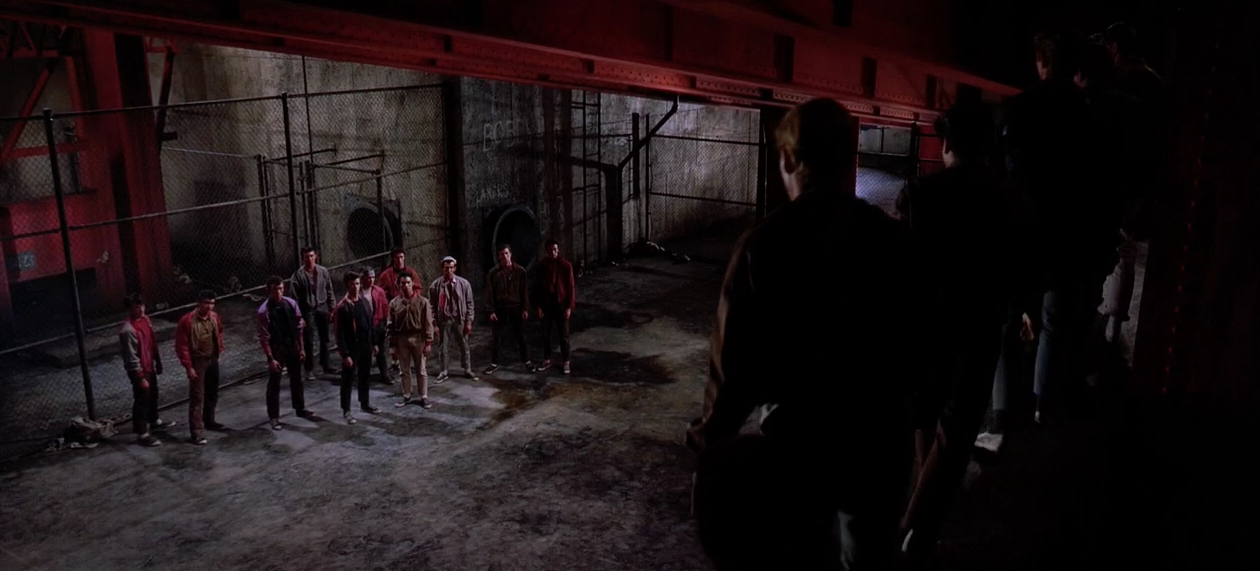
1:39:15 These kids are in their feelings, as they say, but the movie is set in reality, for the most part. Hate, aggression, turf wars, scapegoating, and racism, all have real world consequences and destroy our better angels and even our love. That's the expressive beauty of West Side Story as a tragedy and what Maria and company will soon learn to devastasting effect.
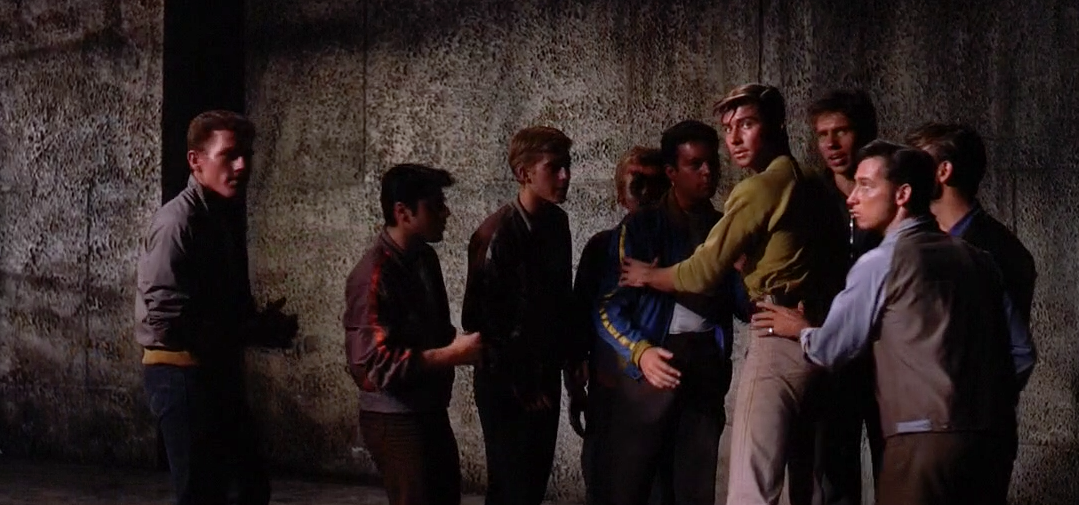
1:40:09 (I'd put my hand there too, Snowboy... but more on Ice in a minute)
1:40:34 Tony runs into the rumble, to try and stop it. The rules were a fair fist-fight strictly between 'Nardo and Ice. Every Jet and every Shark was fooling themselves when they agreed to it, since we know they all brought weapons and there's no way one fist fight would "settle" this with so much animosity being fed from all corners. Tony's efforts to stop the fighting are, of course, in vain.
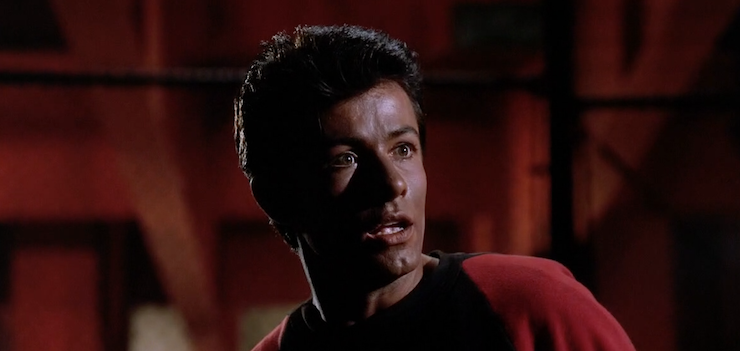

1:41:53 The shot / reverse shot reaction to the first punch thrown. A smart decision to use two closeups, which aren't that common in these group scenes, but remind us that these are full people who bark much more often than they bite and are suddenly aware of how deep they're in it. But note that it still juxtapose theatrical red (courtesy of the art direction this time via the steel girders as roof) with the regular light of real world danger. Okay that's the last I'll harp on the movie's reliance on color to sell the emotions.
1:43:30 I know for some people the stylized balletic violence of West Side Story is a tough suspension of disbelief, but I'd argue that the movie's perpetual shifting between stylized movement and "real" violence is absolutely right for the material; Emotions are not physical, so why shouldn't emotionally motivated fighting (this isn't an action movie) be a mixture? The rumble is at once chaotic and choreographed, filled with both messy brawling and heightened gesture. Bernardo kills Riff. Tony kills Bernardo. And then it's utter mayhem. The dance-like gestures give way to blunt punches, kicking, and beatings with chains.
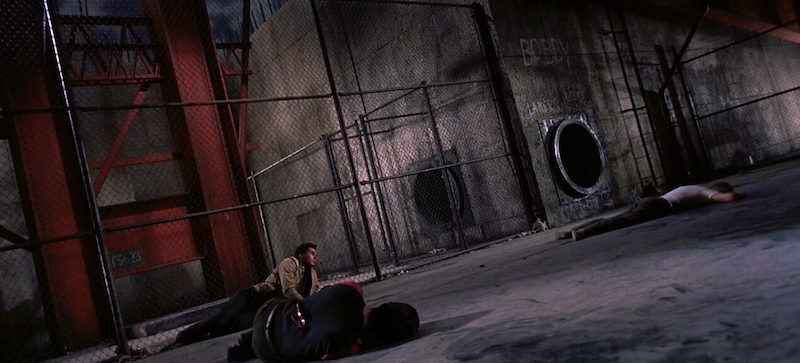
1:44:49 Police sirens interrupt the rumble and everyone vanishes but the dead... and Tony... struggling to get up after having the shit beat out of him. (I don't care for canted angles. Curse you German Expressionism!). Wannabet Jet member Anybodys (Susan Oakes) emerges from a tunnel to help rescue Tony... but more on her (him? What are your preferred pronouns, Anybodys?) in a minute.
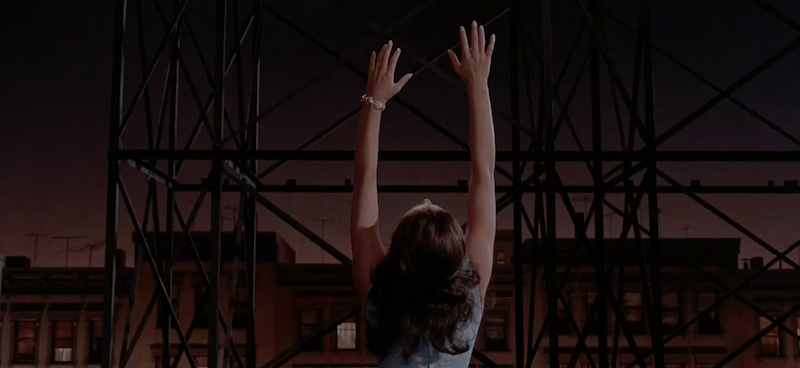
1:46:58 After the violence, muted color and soft lighting on the rooftop when we find Maria lost in romantic reverie, reprising the dance when she met Tony at the gym, without a partner this time. She doesn't know how prophetic this is.
(Everyone surely knows this by now but the bracelet is not a costuming decision, but star vanity. Natalie Wood felt that her left wrist was unsightly due to a onset accident as a child star, so she always had it covered in movies. This was one of the first showbiz trivia things I ever learned as a child, so I love looking at her left wrist in movies even if she didn't)

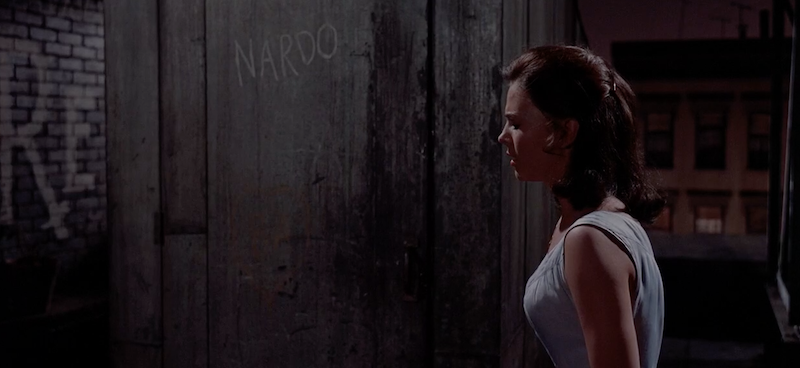
01:47:55 Chino tells Maria about the rumble. This is, I'd argue, Natalie Wood's finest acting within the film. The emotions are ricocheting all around, but she's pushing them away, stubbornly clinging to her romantic delirium. When he tries to tell her about Bernardo, she's entirely maddening, immediately changing the topic to Tony. What happened to Tony? This naturally infuriates Chino who blurts it out that Tony killed Bernardo. The beat that Natalie takes is devastating. She looks nearly catatonic for a split second but then shifts back to DENIAL and then ANGER, misdirected of course, as she chases Chino down the stairs calling him a liar. (Note the brutal brutal set detail of Nardo being scribbled in large chalk on the door. It's been there the whole movie but it pays off emotionally here.)
The Swiss American psychiatrist Elisabeth Kübler-Ross defined grief as being composed of five stages Denial, Anger, Bargaining, Depression, and Acceptance in her 1969 bestseller "On Death and Dying". Natalie Wood beat Kübler Ross to it by 8 years in West Side Story though she works through them all in about four minutes. You have to move fast in the movies, even with a 2½ hour running time.

Make it not be true. Madre de Dios, I will do anything. Make me die. Only please make it not be true.
1:49:54 BARGAINING
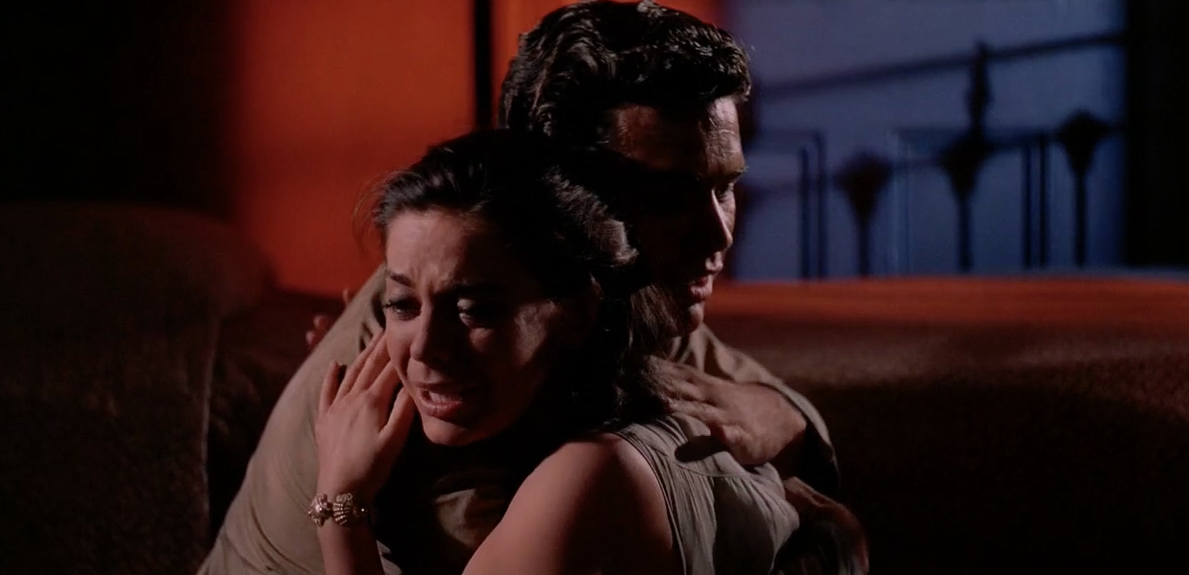
1:50:50 DEPRESSION. Natalie Wood in pain kills me. My eyes tear up even looking at film stills, let alone watching this movie in full.
1:51:30 Tony & Maria sing "Somewhere" together, while clinging to each other. Though I prefer musicals not to be dubbed, the dubbing on West Side Story is about as excellent as dubbing gets, the singers actually always starting from the same vocal and emotional register of Richard Beymer and Natalie Wood's performances, so it flows beautifully.
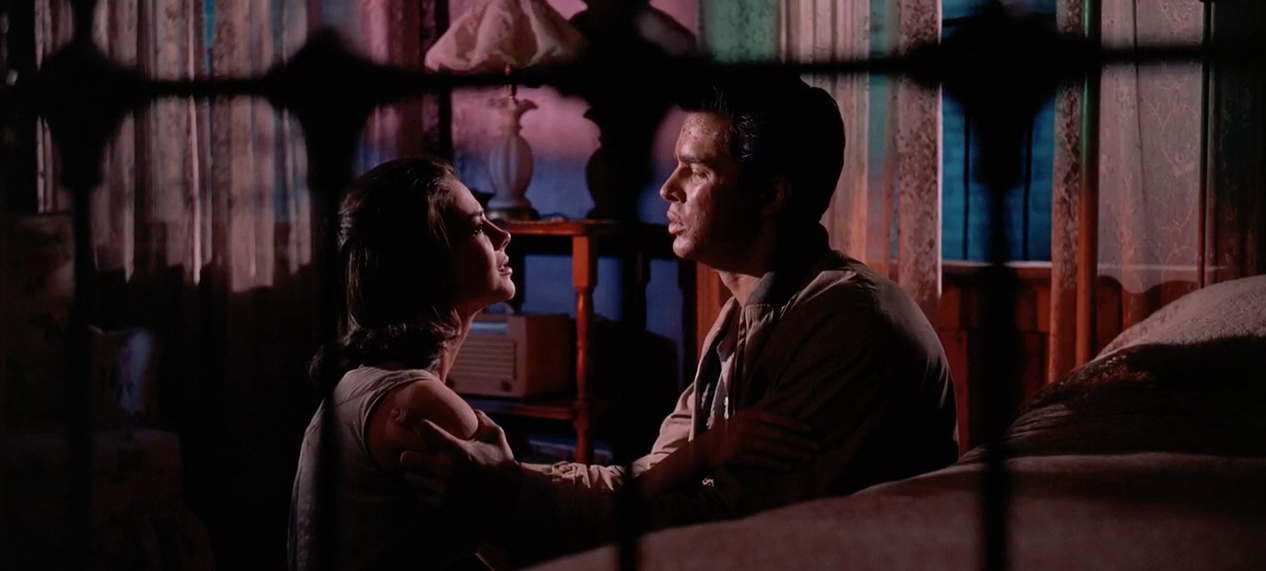
1:52:12 ACCEPTANCE. At the lead in into the song, Maria had told Tony "it's not us. It's everything around us" and she's right. She meant the Jets and Sharks and 'the whole rotten world' (not her phrase but Action's) but even her bedroom is conspiring against them. Note that they're visually behind bars again, just as in the first swoony performance of "Tonight" but the song gives them both courage and temporary solace. ACCEPTANCE. They fall into bed.
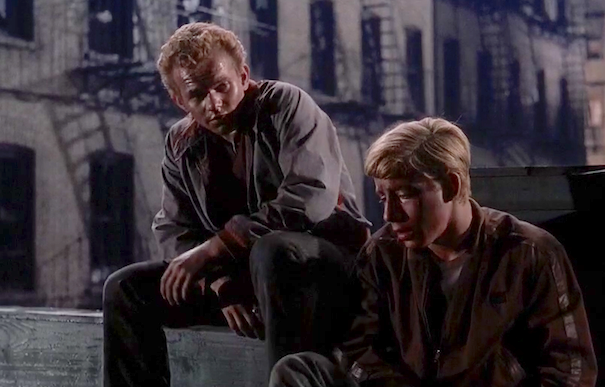
1:54:35 A-Rab finds Baby John (Elliot Feld) crying. Embarrassing true story: when I was little, before I realized I had no talent for singing / dancing I dreamed of playing "Baby John" some day. I'm not sure why I settled on this role (not the lead, what's wrong with me?) but maybe because I was the baby of the family, and my brothers were tougher than me?
Trivia note: David Winters, who played A-Rab in the movie, actually played Baby John in the original Broadway cast. And Tony Mordente who played A-Rab in the Broadway cast, plays Action in the movie. So it must have been weird for the actors to play scenes with other versions of themselves. Winter and Mordente were two of the only cast members who went on to healthy showbiz careers after this movie.
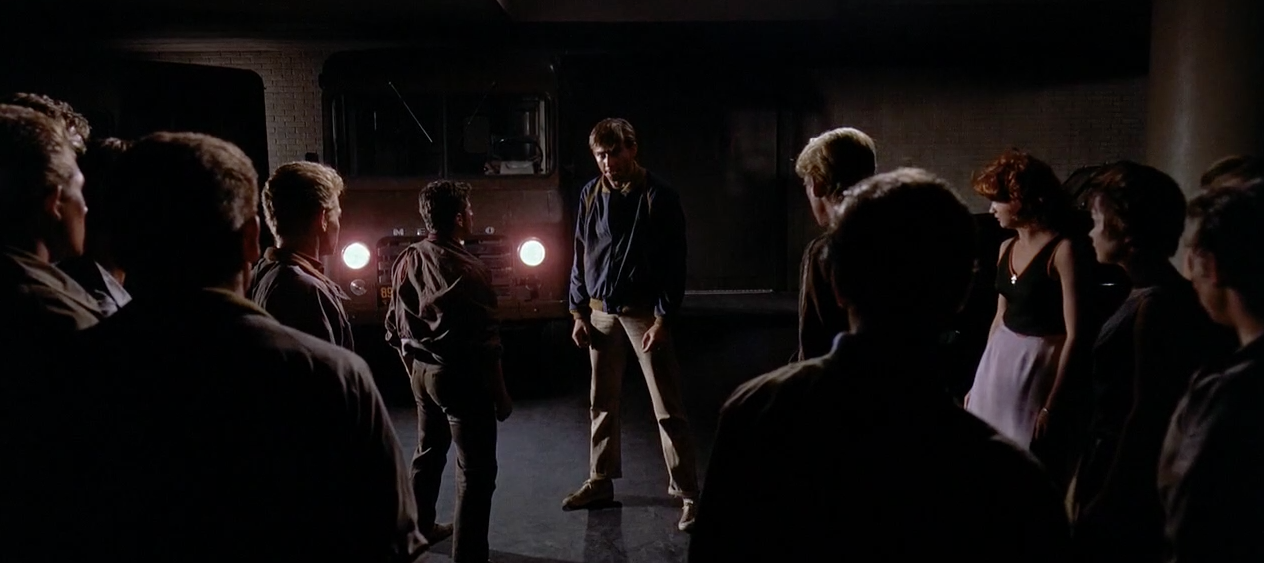
01:58:05 With Riff dead and Tony lost, Ice naturally assumes the mantle as leader of the Jets. He knows they all need to calm down. Especially A-Rab and Action. "You all better dig this and dig it good" Oh, I dig it, Ice I dig it. So let's talk about Ice. Or, rather Tucker Smith.
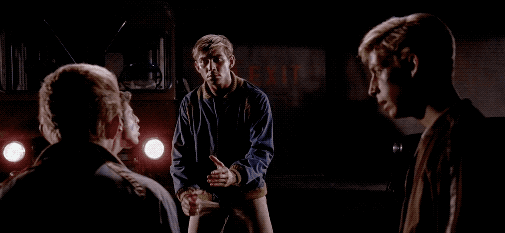
Boy, boy, crazy boy
Get cool, boy
gotta rocket in your pocket?
keep cooly cool boy
Don't get hot cause man you got some hard times ahead...
01:58:05 When I was little, Ice was my secret crush of the film. So secret that I didn't even know it (!) but I waited impatiently, so impatiently, for "Cool," every time.
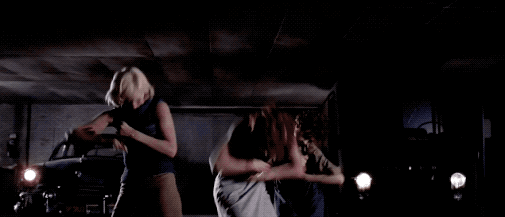
02:00:50. "Cool" is just a thrilling number. This is my favorite part where they separate into mini-groups, each with their own explosion, before they all reverse gather so that they can run out of the shadows as one massive group and leap into another dance break. The invention of VHS and then DVD ended the practice of rereleasing movies in theaters and the smaller tradition of compilation movie documentaries but they were once popular. Like That's Dancing! (1985) which I saw in theaters as a kid, which included this number in full.
Tucker Smith was a replacement actor in the first Broadway production of West Side Story (which closed in 1959) so he was one of the six Broadway players who got to come over from the stage to the screen (though perhaps there are more when you include the non-named characters). On Broadway it appears he was a swing understudy or something because he played Snowboy, Riff, Diesel (renamed Ice in the film), and Big Deal. Perhaps those icy eyes and his heighth, towering over the other Jets, were the determining factor in the screen tests?
One of my high school girlfriends and I read Gilda Radner's autobiography together and as it turns out the famous SNL comedienne, who was a teenager when West Side Story opened and had crushed on Tucker Smith, had met him late in her life in a cancer support group. They both died from cancer just five months apart in the late Eighties. He was 52 and she was 42. He's striking in this movie so it's beyond strange that he barely worked again onscreen (beyond bit roles) or even on Broadway (beyond one more Sondheim show) though he spent a lot of time on other stages.
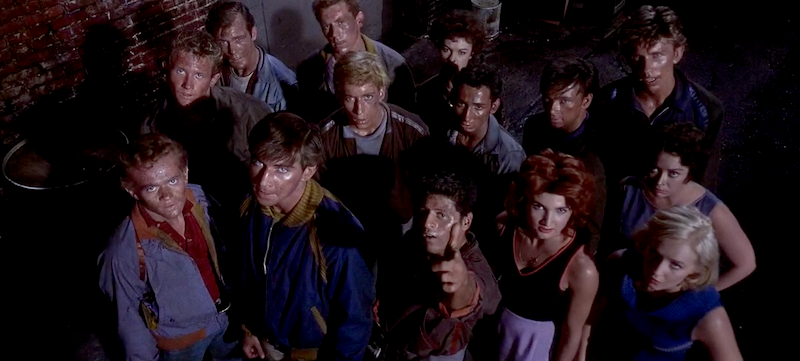
2:02:32 The number ends, appropriately but non-traditionally, by just ending. "okay, let's go," Ice says as the music just kind of fizzles out. The gang follows him out of the garage, snapping. The movie hasn't blown off all its steam, though. The scene ends with an overheard shot and a finger gun lifted either toward that guy who yelled at them to get out of the streets earlier or to us. Either way, as in "Tonight," we're implicated in the aggression and 'lousy world' that's shaped these kids.

2:04:02 I've always loved this beat when Ice finally all but hands Anybodys a membership card to the Jets by referring to them as "Buddyboy". One thing I love about ensemble pictures, is that the filmmakers rarely feel the need to fill you in on every detail of each character. There's less excessive backstory or exposition so you're left with lots to imagine about the characters and it feels more inclusive to me as an audience member, leaving this empty space around the movie so that you can stretch and bend it to comform to your own imaginative places. Ice, unlike the other Jets, never seems bothered by Anybodys presence (even in earlier scenes) and doesn't care about their gender noncomformity. Maybe I always intuited this as West Side Story's only queer moment? Somehow when watching the second half of the movie when he's bossing all those sweaty guys around and everyone's calling him Daddy-O, I forget that in the first half he's romantically paired with Velma (Caroline D'Andrea).
Trivia Note: Carole D'Andrea was one of only two actors in the film who were reprising their original stage role. The other is Tommy Abbott who plays one of the three main Sharks "Gee-Tar". D'Andrea never made another movie but right before West Side Story came out she married Robert Morse (Mad Men) who was in rehearsals that year for the show that would make him famous, How to Succeed in Business Without Really Trying.

2:04:28 At the very beginning of the movie we saw Chino run past "Vote Al Wood" posters and now Ice, darts across the same posters, a reminder that we're occupying a tiny space within Manhattan. I was hoping to find some larger political message in these posters (like maybe it was a real and racist politician at the time, as a way of reminding us of the lousy world that won't let Tony & Maria be?) but it turns out its just something of an inside joke -- the posters were a nod to West Side Story's production manager Allen K Wood.
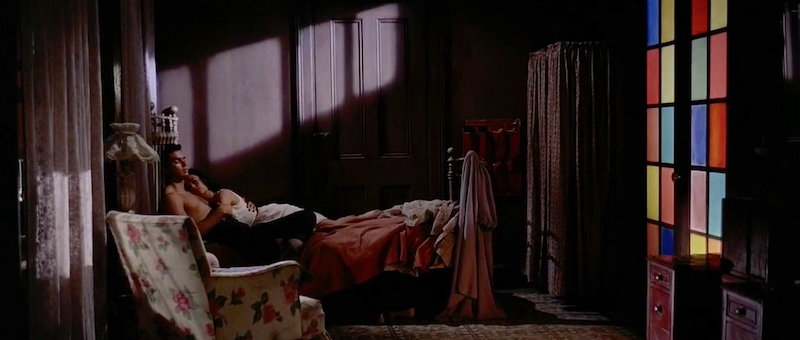
2:04:56 Post Coital. Note how Maria's bedroom, with its door echoing the color-blocking look of stained glass makes the room a holy zone. God approves of this union. (Another true embarrassing story: I grew up in a very religious home and premarital sex was a sin. But my mom thought it was sort of okay in West Side Story because they sort of got married during "One Hand One Heart" -- hee!
2:06:50 "A Boy Like That" such a painful scene between Anita and Maria.
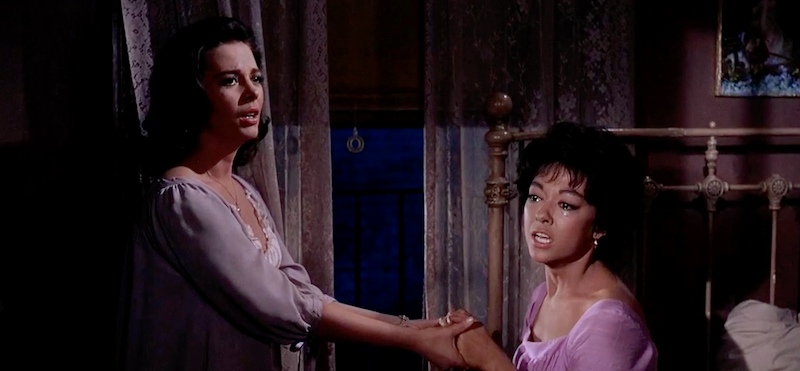
2:10:41 The song morphs into a different song altogether "I Have a Love" and ends with Anita forgiving Maria and joining her in her rapturous defense of love, and moral relativity essentially, despite... uh... the body count. It's a testament to Rita Moreno's truly remarkable performance, and the extremely wise but now unthinkable filmmaking decision to leave her in the frame the whole scene (a modern movie would undoubtedly give her just a couple of reaction shots and otherwise be entirely closeups on Maria) that this scene works at all.
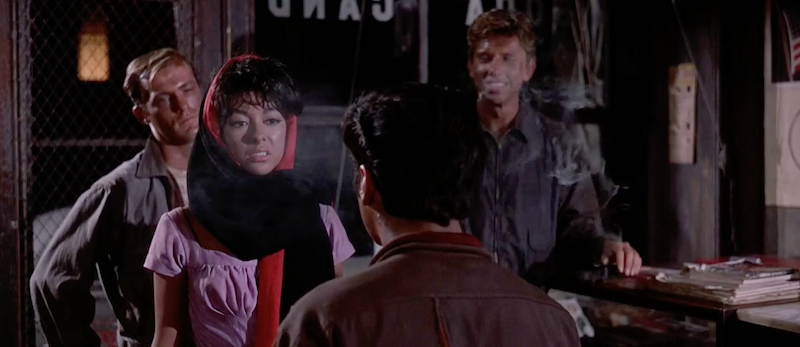
02:15:00 Another extremely painful scene as Anita attempts to take Maria's message to Doc and is interrupted by The Jets who call her racial slurs and blow smoke in her face. It only gets worse from there. I literally did not understand this scene when I was young but it's fairly clear now as an adult that what's visually coded here is rape.
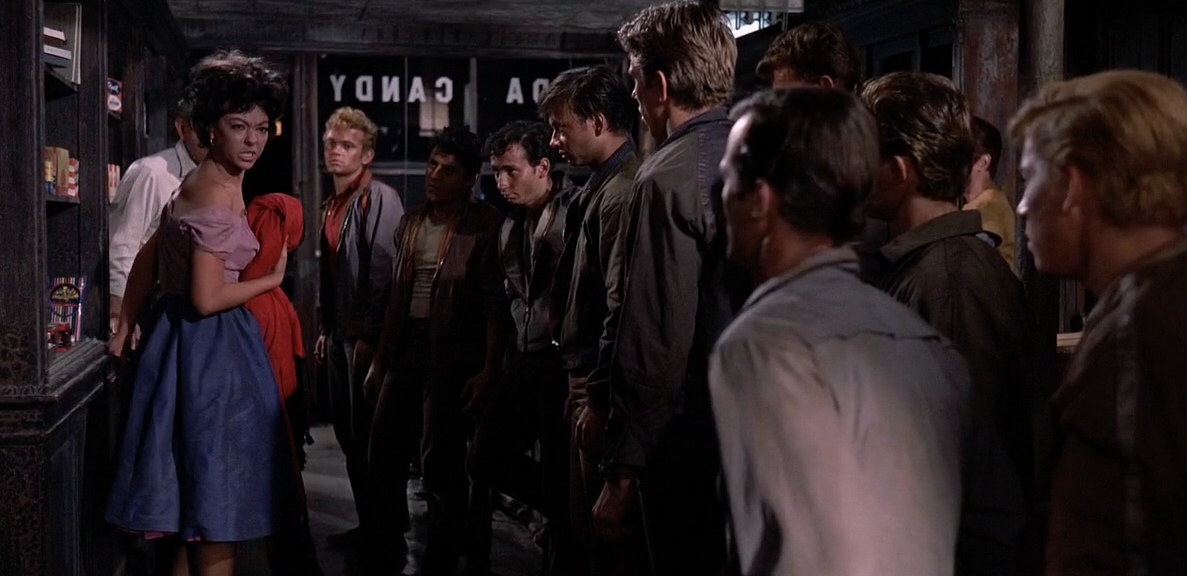
Bernardo was right. If one of you was lying in the street, bleeding. I'd walk by and spit on you!"
2:16:46 The disgust of that realization makes Anita's angry lie "You tell him that Maria is dead!", the lie that will only amplify the tragedy further, far more emotionally justified than it once seemed.
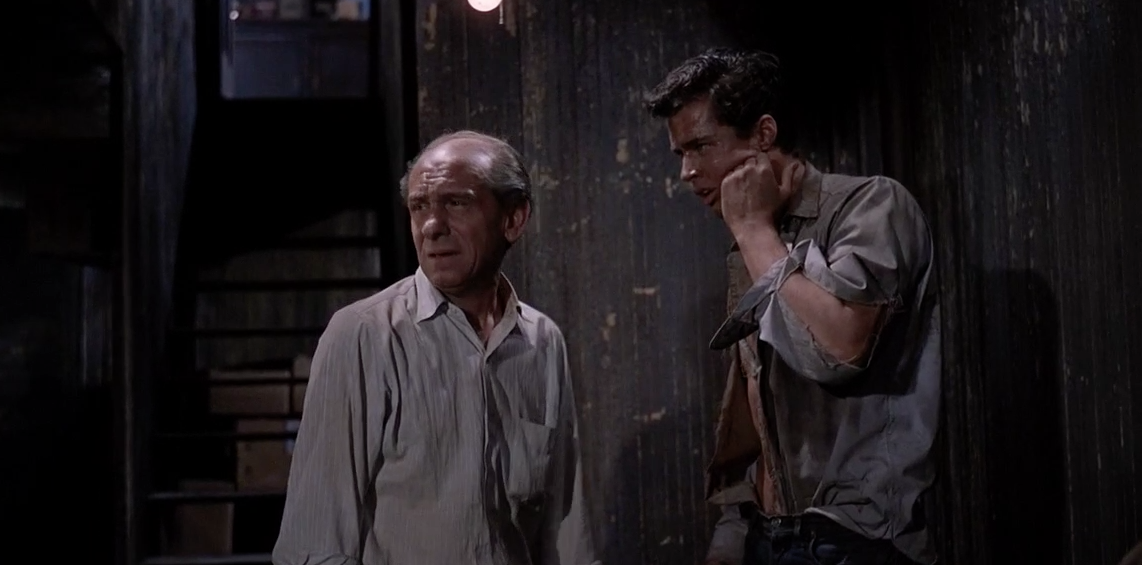
02:18:52 Because West Side Story is tremendously painful for its last half hour, we'll take odd moments of levity where we can. Have you ever noticed how Tony keeps attempting to tuck in his shirt even though it's totally ripped up and his chest and stomach are still exposed? Just take it off, Tony, it's only good for rags now! Doc tells him the horrible news. And Tony runs into the streets looking for Chino who can end his misery.
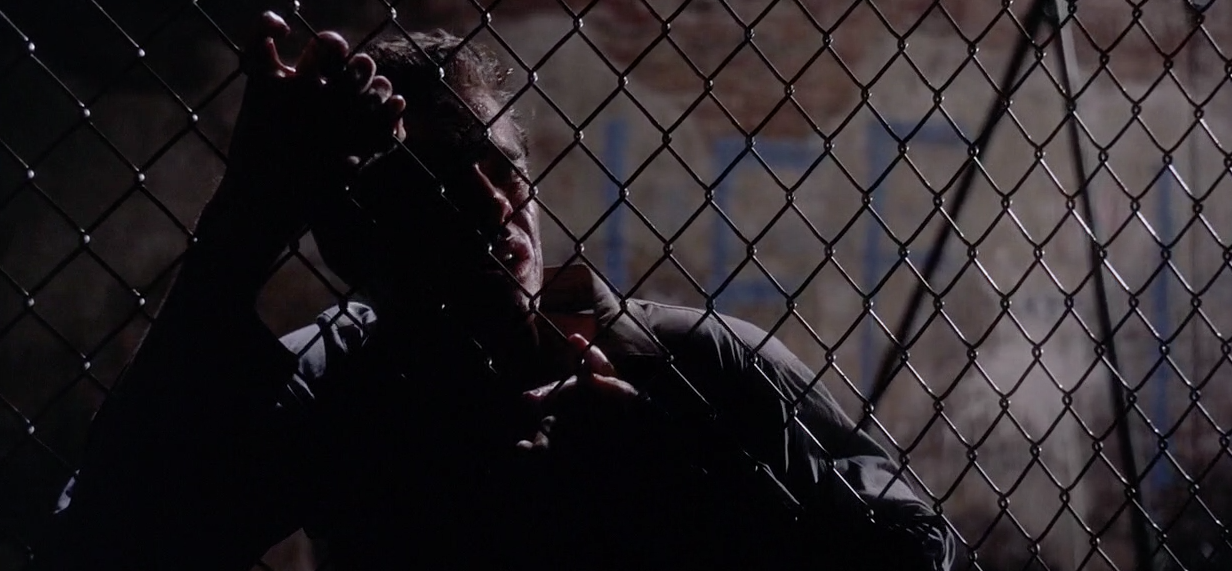
Please, will ya? I'm waiting for you. I want you to.
02:21:33 Tony's death wish guts me. Though I agree with critics that Richard Beymer's performance is far from perfect I do think he's totally excellent in the finale which puts him through the emotional ringer and includes a perfectly played bewildered death scene. Next time you watch West Side Story, pay close attention to the sound mix here. The movie is dead silent but for the actors in this penultimate scene. You hear every breath, every footstep, every garbled cry. And then the gun shot. It's a tremendous choice of minimalism within the context of a maximalist movie.
West Side Story is so potent as a full experience that somehow it even used to survive terrible commercial breaks on network television at the most inopportune places. They used to put commercials right in the middle of this scene here, I kid you not. I was a furious crying child to have the tragedy interrupted.
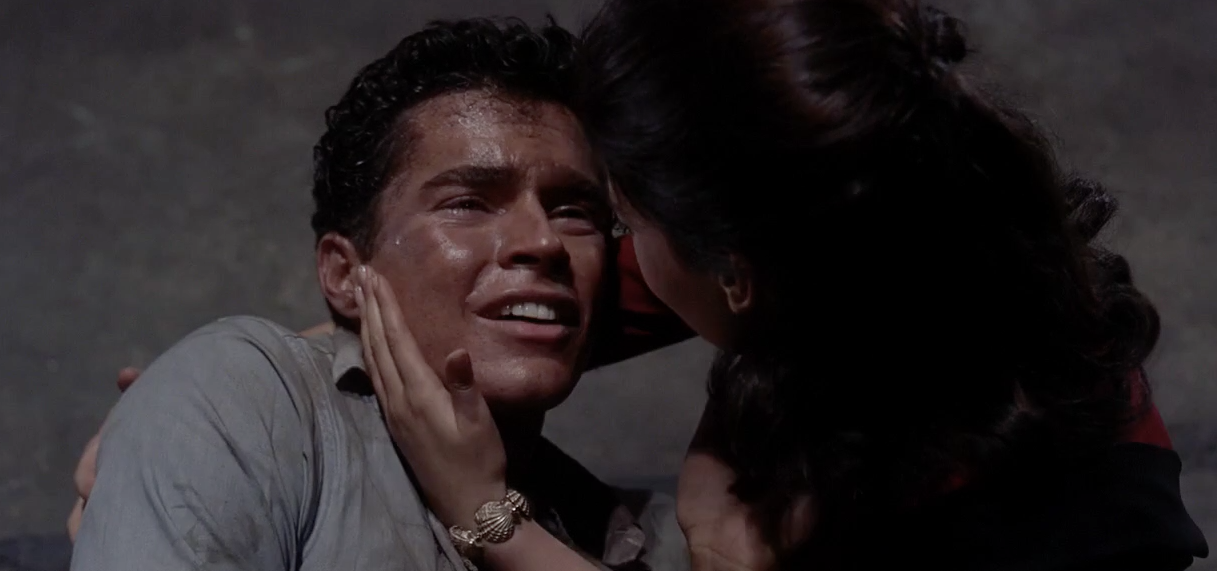
They won't let us be.
02:23:36 Heartbreaking. And not just for Tony & Maria.

02:24:57 Maria's final agonized speech about contagious hate and collective guilt is something else. She asks how many people she can kill and still leave a bullet for herself. I still sometimes scratch my head trying to imagine how Natalie Wood lost the Best Actress Oscar this year given the one-two punch of this Best Picture winner (also the #1 box office hit of the year) and her even stronger nominated performance in Splendor in the Grass, another hit, in the same year. What did they have against her? Or did they assume she'd have many more chances as she was just 23 at the time?
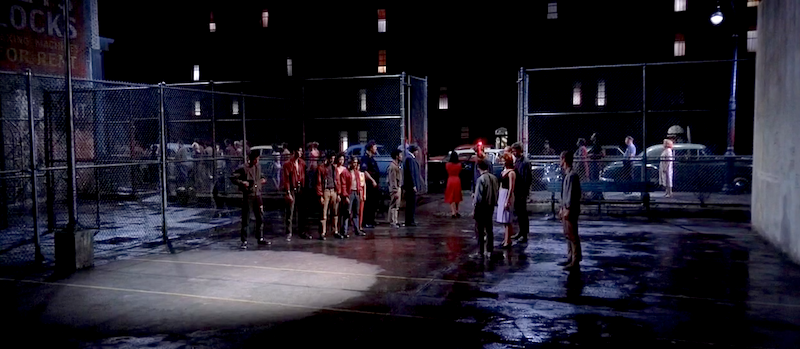
The reverential ending, so hushed, and final. It amounts to a reverse curtain call. The stars leave first, one carried away as if by funeral procession, and the rest of the cast follows. A cinematic rebuke to the immediate emotional release of clapping for still-living actors as they bow on stage after performing death scenes.
2:28:42 End Credits as graffiti. (A bit more after these images)
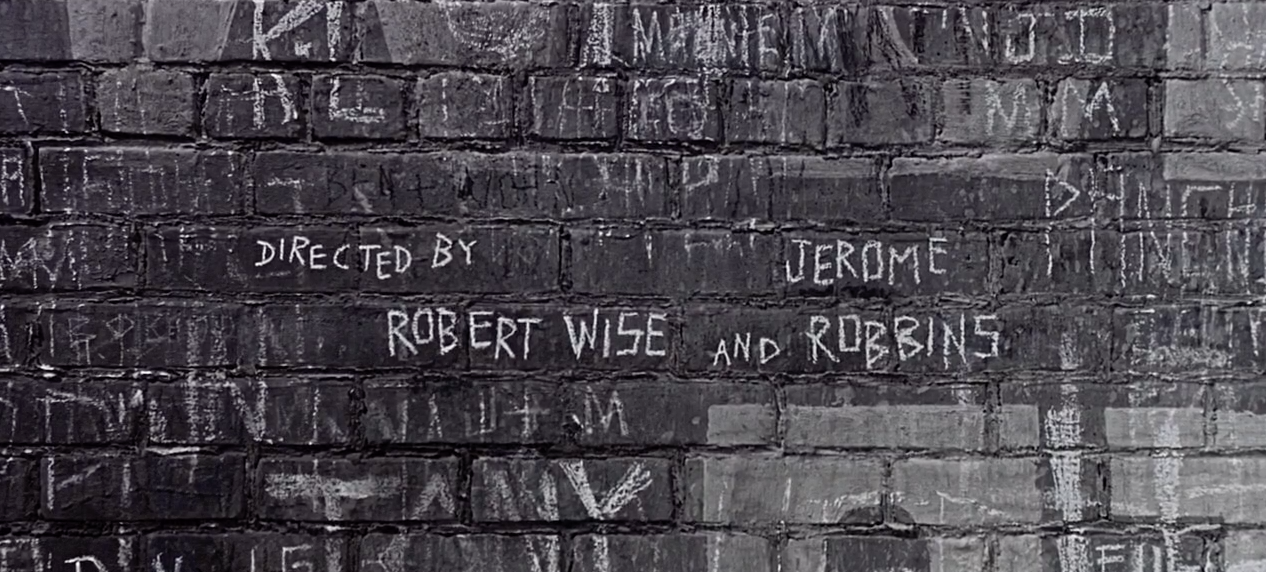
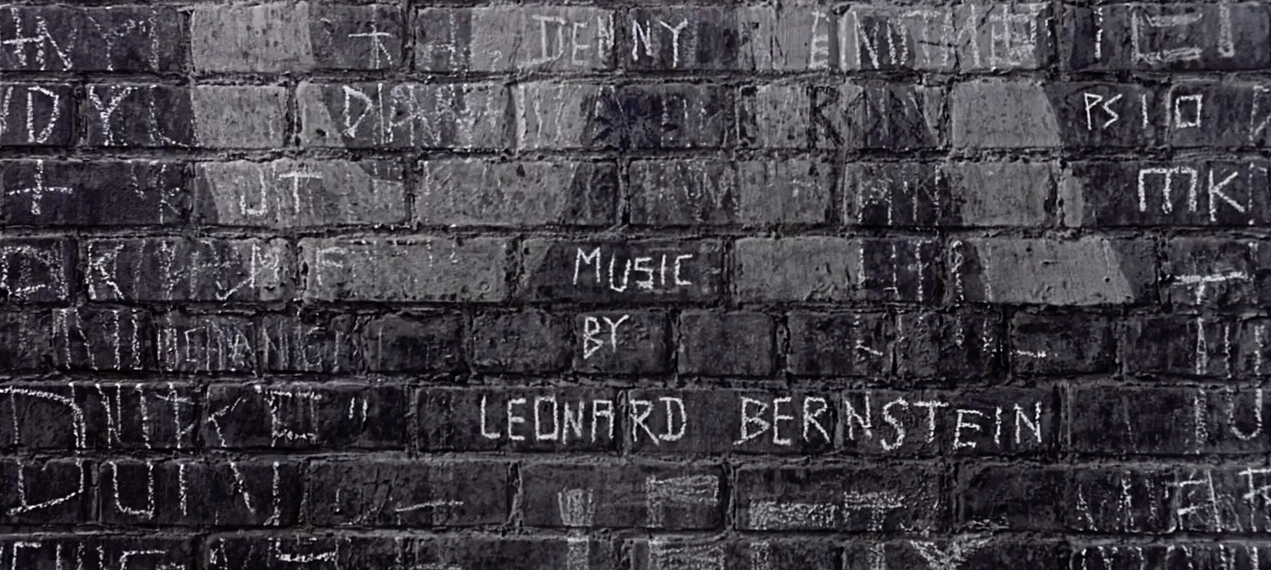
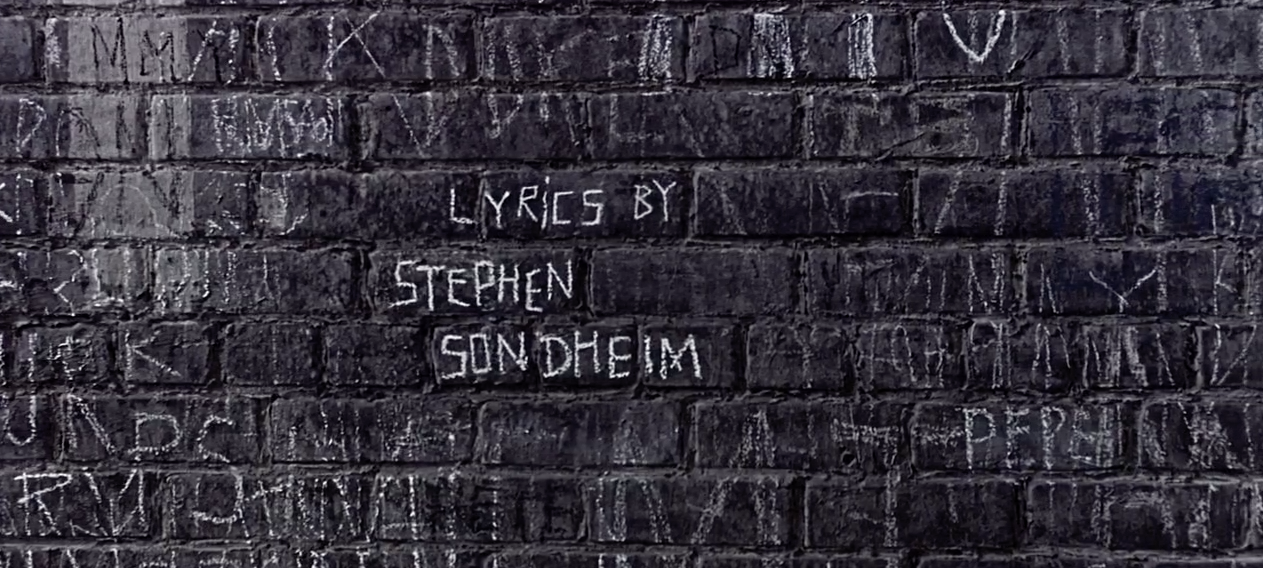
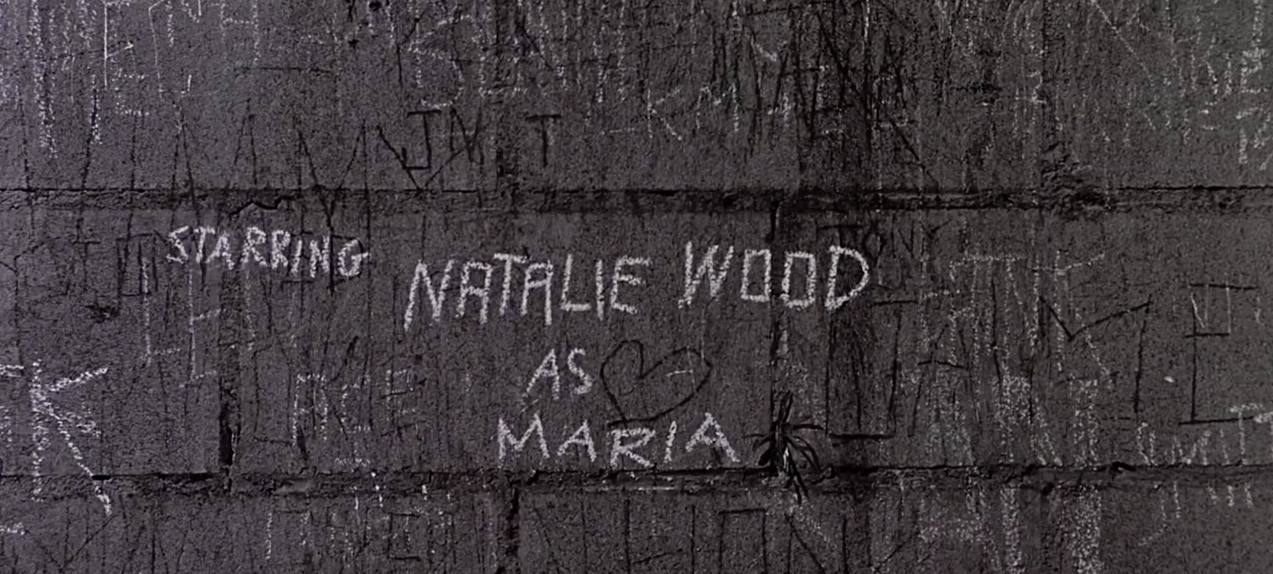
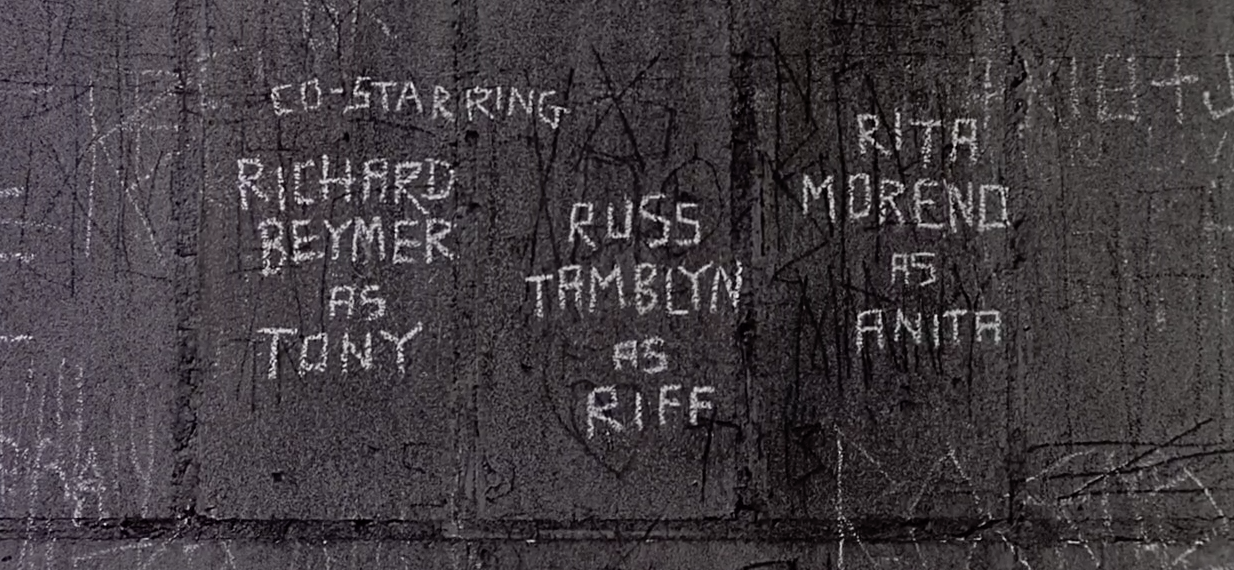
A perfect visual coda to this tragic tale of unruly street kids. A round of applause for these grand artists, please. Especially Bernstein, Robbins, and Moreno.
It's been a real treat to revisit West Side Story this week for Leonard Bernstein's centennial. It's still my sentimental go-to answer for "favorite film of all time". Yes, there are movies that are "better" and less "problematic" (the mix of actors of color and white actors playing people of color, in particular, feels like an odd-compromise between the movie's anti-racism message and the time in which it was made) but I'm unable to care too much about the drawbacks when it so thoroughly shaped me. Musicals were immediately my favorite genre, and even as I became a cinephile and understood much more about the movies than I ever did as a child, I still think they're the ultimate movie genre, more capable of harnessing all the rich artistry a movie can draw from, than any other. West Side Story remains a towering example of just that.
West Side Story was so emotionally formative that I literally expected that when you grew up and fell in love, like Tony and Maria, the whole world would blur out and you'd know. I've definitely been in love as an adult and the first time I was so disappointed that that didn't happen! But in a small way, West Side Story was right. When I get caught up in it, it's all movies in one, but also beyond them. Like Tony and Maria seeing each other for the first time, all other movies are fuzzy background.
Only you, you're the only thing I'll see forever.
I would fall in love with many movies thereafter, but first loves stick.